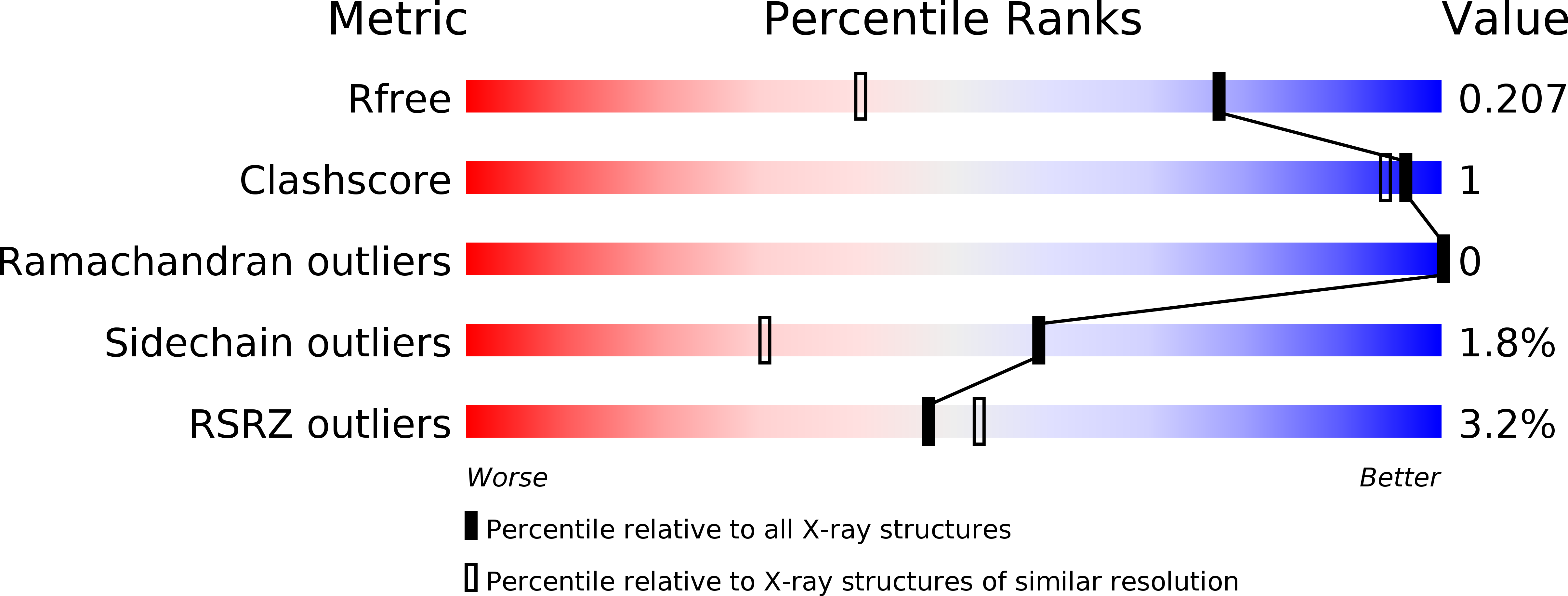
Deposition Date
2007-07-20
Release Date
2007-07-31
Last Version Date
2024-10-30
Entry Detail
PDB ID:
2QO4
Keywords:
Title:
Crystal structure of zebrafish liver bile acid-binding protein complexed with cholic acid
Biological Source:
Source Organism:
Danio rerio (Taxon ID: 7955)
Host Organism:
Method Details:
Experimental Method:
Resolution:
1.50 Å
R-Value Free:
0.20
R-Value Work:
0.18
R-Value Observed:
0.18
Space Group:
P 32


